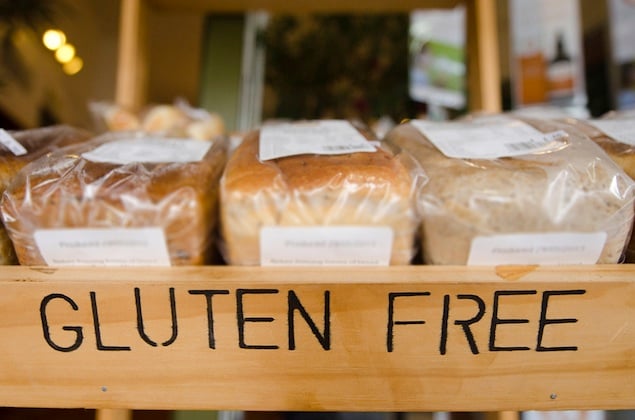Amy’s, Kinnikinnick, Udi’s, Glutino, Bob’s Red Mill: These are some of the many gluten-free brands you might find on grocery store shelves these days. Some stores have entire sections dedicated to the diet, offering everything from gluten-free breads, cakes, and cookies to frozen meals and pizzas.
Though it’s becoming more popular for companies to offer GF items—great news for those allergic to gluten—it’s also frequently the case that brands are slapping a “gluten-free” label onto products simply to make them appear healthier, even on items that were gluten-free to begin with . . . such as bottles of water.
“This happens all the time and is really irritating to those of us living a gluten-free lifestyle,” says Vanessa Maltin Weisbrod, executive editor of Delight Gluten-Free Magazine and the author of several gluten-free cookbooks.
While packaged GF foods may appeal to health-conscious consumers, the reality is they tend to be chock-full of sugar, carbohydrates, and fat, largely because adding these ingredients makes the food taste better, she says.
“The rise in popularity of the gluten-free diet has led the general public to believe that gluten-free means better for you,” Weisbrod says. “While these packaged products are safely gluten-free and a wonderful replacement for people who need to maintain a gluten-free diet for health reasons, they aren’t necessarily better for you when it comes to nutritional qualities.”
A good rule of thumb: If the item wasn’t healthy as a “regular” product, the gluten-free version won’t be, either. In other words, a gluten-free cupcake or doughnut is going to be just as unhealthy as its gluten-containing counterpart.
GF packaged goods also tend to rely on non-fortified—though naturally gluten-free—flours such as almond, sorghum, and buckwheat. These, says Weisbrod, have “nowhere near the same nutritional value as traditional wheat flours.” Although some of those flours may contain fiber, protein, and amino acids, most gluten-free products are made with ingredients like rice flour and cornstarch—which offer very little, if any, health benefits, Weisbrod says.
The healthiest way to eat gluten-free is to stick with fresh fruits and vegetables, dairy products, lean proteins, and naturally gluten-free whole grains such as quinoa, brown rice, and amaranth. If you do buy packaged goods, look for ones that use gluten-free whole grains and flours that are fortified, Weisbrod recommends. Fortified gluten-free flours will provide essential vitamins and minerals, such as B vitamins and iron.
A few examples of good gluten-free items to look for the next time you’re at the store: Bob’s Red Mill makes whole-grain rolled oats, Udi’s sells whole-grain gluten-free bagels, and 1-2-3 Gluten Free offers fortified gluten-free flour mix.
See also:
Can Going Gluten-Free Help You Lose Weight?
10 Healthy Gluten-Free Recipes




















